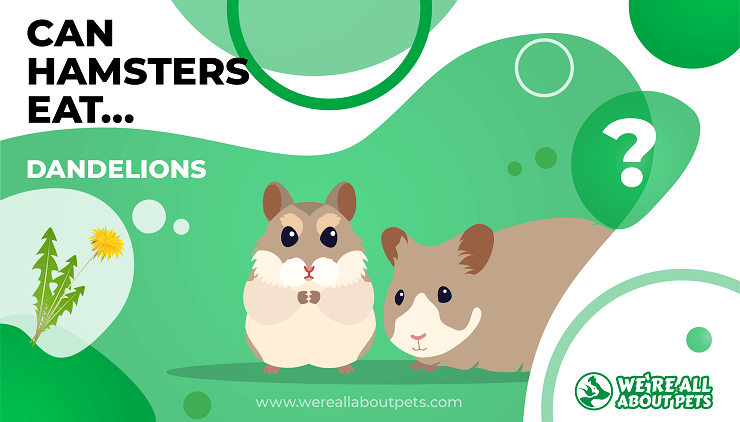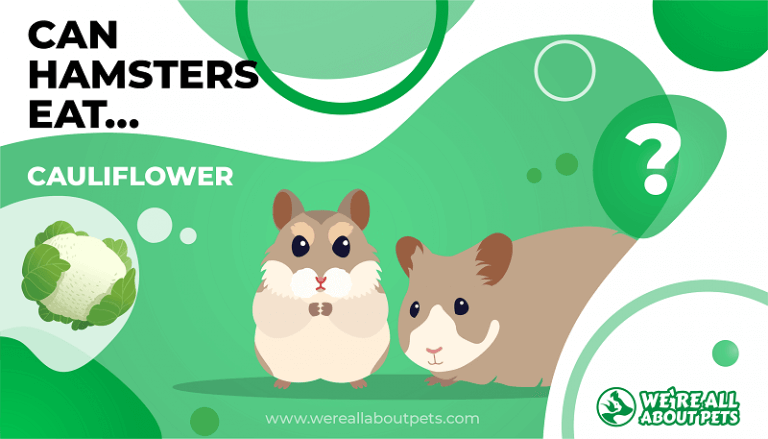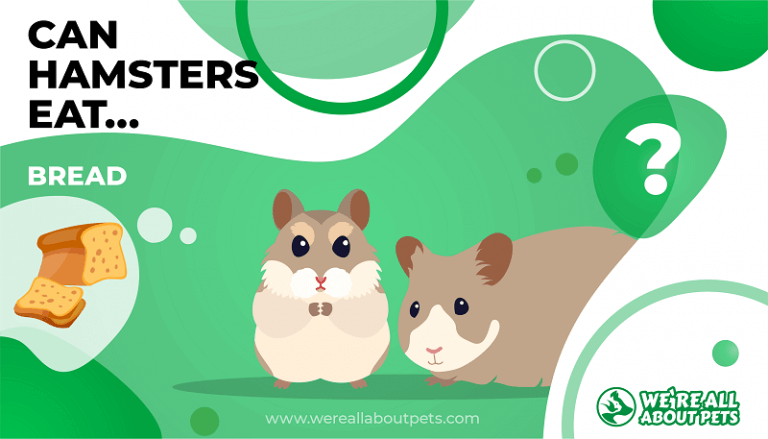Can Hamsters Eat Lettuce?
This page contains affiliate links. We may earn money or products from the companies mentioned in this post through our independently chosen links, which earn us a commission. Learn More
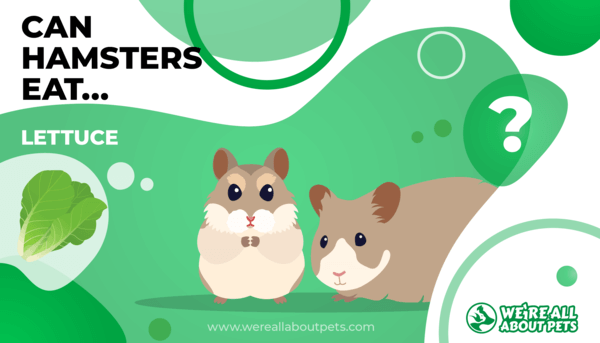
Think of fresh vegetables and it’s likely that an image of lettuce comes to mind!
After all, it’s a favorite with most people, and it’s versatile enough to make its way into sandwiches and wraps as well as salad. But can hamsters have lettuce?
Is it OK to share this leafy green veggie with your pet, or is lettuce toxic for hamsters? If they can have it at all, how much lettuce should a hamster eat?
There are quite a few misconceptions out there concerning lettuce for hamsters and we’re about to clear those up.
We’ll start here: Yes, hamsters can eat lettuce, but only certain kinds.
Keep reading for the full scoop. In just a few minutes, you’ll have answers to all of your questions about giving lettuce to hamsters.
Lettuce Nutrition Stats
Lettuce is very low in calories, yet it’s high in water, so you can eat as much as you like without worrying about whether your pants will fit.
One cup of lettuce offers approximately:
- 5 calories
- 1 g carbohydrates
- .5 g fiber
- .5 g protein
- 1 g fat
Lettuce Nutritional Facts
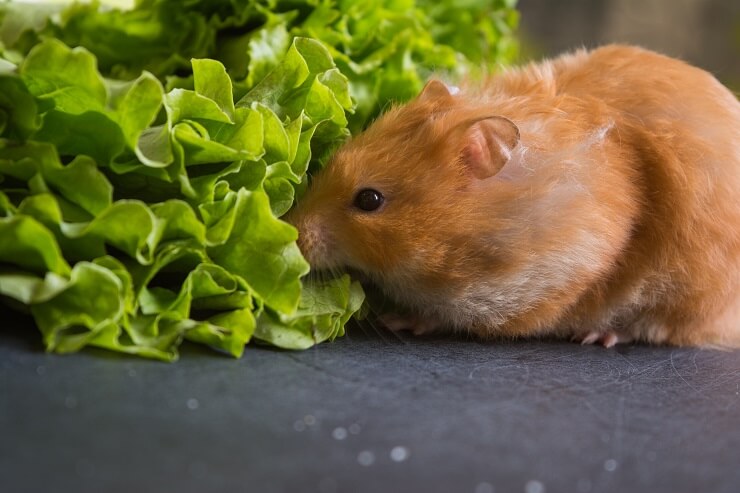
Lettuce is an outstanding source of vitamin A, and it’s a pretty good source of many essential minerals and antioxidants, too.
The same cup of lettuce gives you about:
- 5 mg vitamin C
- 2665 iu vitamin A
- 8 mg potassium
- 13 mg calcium
- 7 mg magnesium
- 3 mg iron
- 13 mg calcium
- 5 mcg vitamin K
- 7 mcg folate
- 4 mg phosphorus
Can Hamsters Have Lettuce?
Yes and no. Hamsters can only have certain types of lettuce, and only if you wash it well before offering it to them.
Romaine lettuce, red leaf lettuce, green leaf lettuce, and dry leaf lettuces such as bibb and buttercrunch are good choices. There are many other lettuces that are good for hamsters, a well.
Now that you know which types of lettuce hamsters can have, here’s what to avoid:
Never give your hamster iceberg lettuce. It’s far too high in water, it offers barely any nutrients, and it contains a compound that can be toxic if overeaten.
Iceberg lettuce can make your pet very sick so skip their treat altogether even if this is the only fresh option you have around. Their hamster pellets are safe to eat and they’ll be happier making do with those than they would be with a nasty case of diarrhea or even a case of wet tail caused by eating iceberg lettuce.
Is Lettuce Good For Hamsters?
Lettuce is nutritious and it can be a good addition to your hamster’s weekly diet. You’ll want to be careful about how much you offer them and how often you feed it to them, though, because odd as it sounds, there’s definitely such a thing as too much lettuce for a hamster.
Do Hamsters Like Lettuce?
Most hamsters like lettuce – in fact we never met a hamster yet that wouldn’t happily nibble on a little bit of romaine or butter lettuce given the chance!
How Much Lettuce Can A Hamster Eat?
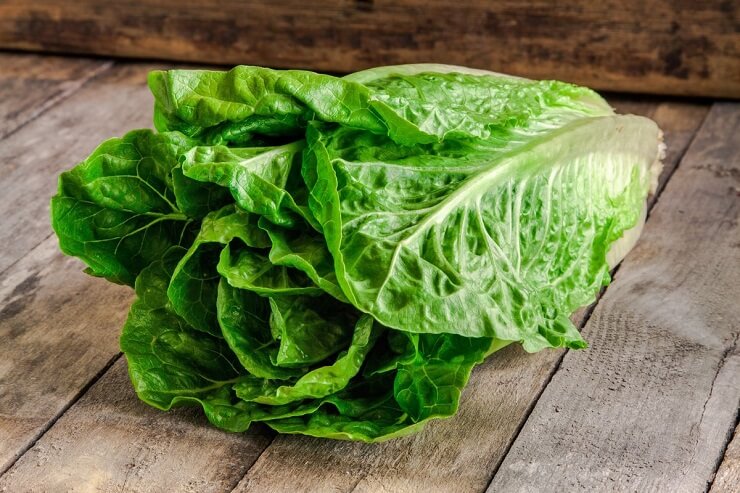
We humans can happily munch endless amounts of lettuce without suffering any ill consequences. Unfortunately, it’s a different story for hamsters.
Here’s how much lettuce a to feed your hamster:
| Age | Amount |
| Baby hamster | None |
| Adult hamster | One piece of lettuce leaf the size of the hamster’s head |
Wait, what?!
Here’s the thing: Lettuce (even varieties hamsters can have) is full of water. When hamsters take in too much water, they can suffer from a condition called hyponatremia, which throws their entire body into imbalance and leads to diarrhea.
In the wild, hamsters eat mostly dry foods. Too much lettuce means too much water, and that’s never a good thing.
Give your hamster the outer, drier portion of the lettuce leaf and not the central, crunchy “stalk” part of the leaves that contains the most water. This – and strict portion control – is the best way to keep your hamster safe while allowing them to enjoy a little bit of lettuce.
Since your hamster’s digestive tract is sensitive to sudden changes, you’ll want to take yet another precaution and offer just half the full portion of lettuce the first time they enjoy this treat. Over the next 12 hours or so, watch for signs of diarrhea and general digestive discomfort.
So long as all goes well, you can give them the full amount next time lettuce is on their menu.
How Often Can A Hamster Eat Lettuce?
Your pet can have leafy greens every day but there are better choices than lettuce, namely spinach, kale, cabbage, and other greens with lower water content. Now that we’ve cleared the air concerning greens for hamsters, you can schedule a lettuce snack once or twice per week – but don’t offer it on the same day as you provide other watery snacks.
- If your hamster is a new addition to your family, you can give them a very tiny bit of lettuce as an introduction to fresh food. Offer a teeny piece about a quarter of the size of their head.
- You can repeat this once every other day and during the following week, you can either introduce a new vegetable or increase their intake to a piece of lettuce half the size of their head. Gradually introducing fresh food gives your hamster’s digestive system time to adjust.
- Do watch for signs of diarrhea throughout the process and stop giving them lettuce if you notice a problem.
The Correct Diet Is Important
Wild hamsters eat seeds, grasses, little bits of herb, the occasional berry, and even other creatures such as crickets and worms!
Even though lettuce isn’t part of a wild hamster’s natural diet, it’s probably something that they’d nibble on if given the chance. Your hamster’s diet should contain all the same nutrients a wild hamster would eat, which is why you should be feeding them hamster pellets every day.
Look at the package to find the correct serving amount for your hamster’s age and size. Here’s what else to feed a hamster:
- Fresh Timothy hay: Not nutritionally necessary, but very good for your hamster’s teeth and for their mental health. Hamsters like to stay busy, and hay helps them do it. They’ll use the tiny strands to build tunnels and nests to make their hamster habitats feel homier, plus they’ll nibble as they go.
- A small amount of birdseed: Just a teaspoon per week adds a little bit of healthy fat to your hamster’s diet and gives them one more thing to hide in their food storage spot.
- Protein treats: Optional, since your hamster’s pellets contain adequate protein. Dried mealworms are very good for hamsters and are easy to keep on hand.
- Very tiny bits of fruit and vegetables: Just enough to nibble on every now and then, but not enough to stash away. Remove any leftovers so that they don’t become moldy or spoilt.
- Fresh, clean water: Even though your hamster won’t drink much, it’s important to rinse and refill their drinking bottle at least once per day.
Untreated softwood, coconut shells, unbleached loofah, and hay cubes are examples of chewable items that should be available to your hammy 24/7. Even though hamster toys aren’t exactly part of your little friend’s diet, they help prevent your hamster’s teeth from becoming overgrown!
What Are Other Healthy Alternatives To Lettuce In A Hamster’s Diet?

Since your hamster can’t have a lot of lettuce, you’ll want to offer other natural treats instead.
Here are some ideas to help you get started with hamster menu planning:
- celery
- parsnip
- broccoli
- broccolini
- cauliflower
- sweet potato
- asparagus
- baby corn
- artichoke
- sweet corn
- cabbage
- basil
- cilantro
- watercress
- green beans
- summer squash
- winter squash
- pumpkin
- tomato
- mint
- parsley
- carrot
- carrot tops
- okra
- bok choy
- yu choy
- cucumber
- bell pepper
- potato (cooked only)
- beets
- beet tops
- sprouts
- swiss chard
- spinach
- rocket
- zucchini
These foods are just a starting point: There are many wonderful natural foods that are safe for your hamster to eat!
Since some foods that are healthy for you (and for some other pets) aren’t safe for hamsters, it’s important to do a little bit of research before you offer your pet anything new. This way, you can learn how much to offer and how often you should offer it.
For now, giving your hamster lettuce (only the right kind, and only in small amounts) is a nice way to give them something different to nibble on.
Frequently Asked Questions
Is lettuce safe for hamsters?
Yes, in general. But only offer the right kinds of lettuce, i.e. romaine, red leaf, green leaf, bibb, butter, endive, and so on. The darker the lettuce, the better it is for your hamster. Remember to offer the right amount, too – it’s best to err on the side of caution and only give your hamster tiny bits of lettuce.
Can lettuce make my hamster sick?
Yes, lettuce can make your hamster very sick if you offer too much, or if you feed the wrong kind. Never give a hamster iceberg lettuce as it contains far too much water, and since it also contains a compound that can be toxic if overeaten.






